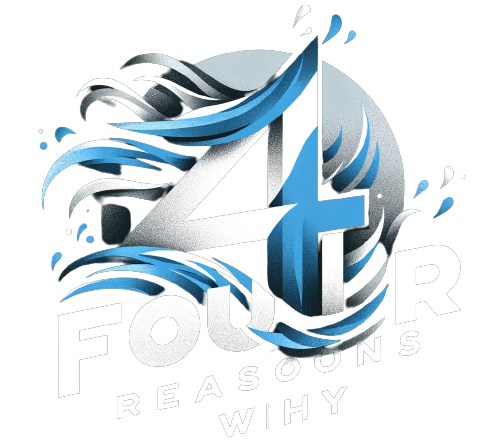Enhancing Blog Engagement through Diversified Content
In today’s fast-paced digital landscape, blog engagement is more crucial than ever. With countless blogs competing for readers’ attention, it’s essential to stand out. One of the most effective ways to achieve this is through diversified content. By offering a variety of content types, you can keep your audience interested, cater to different preferences, and ultimately boost engagement. Let’s dive into how you can enhance your blog’s engagement by diversifying your content.
Why Diversified Content Matters
First and foremost, let’s understand why diversified content is vital. Think about your own media consumption habits. Do you prefer reading long articles all the time? Probably not. Sometimes, you might enjoy a quick infographic, a video, or even a podcast. Diversified content caters to these varying preferences, ensuring that your blog remains fresh and engaging for a broader audience.
Types of Diversified Content
- Written Articles
- Traditional blog posts are the backbone of any blog. They provide detailed insights and are great for SEO.
- Infographics
- Infographics are visual representations of information. They’re easy to digest and highly shareable.
- Videos
- Videos can convey complex information quickly and are great for engaging visual learners.
- Podcasts
- Podcasts allow your audience to consume content on the go. They’re perfect for busy individuals.
- Interactive Content
- Quizzes, polls, and interactive tools can make your blog more engaging and fun.
The Power of Infographics
Infographics are a powerful tool for enhancing engagement. They combine visuals and information in a way that’s easy to understand and remember. For instance, if you’re discussing digital marketing trends, an infographic can summarize the key points and statistics, making the information more accessible. Bold terms and clear visuals can guide the reader through the content effortlessly.
Engaging Your Audience with Videos
Videos are another excellent way to diversify your content. They can range from tutorials and how-to guides to interviews and behind-the-scenes glimpses of your business. Videos are particularly effective because they combine visual and auditory elements, catering to multiple senses at once. They also have a higher chance of being shared on social media, expanding your reach.
The Growing Popularity of Podcasts
Podcasts have seen a significant rise in popularity over the past few years. They offer a unique way to engage with your audience, allowing them to consume content while multitasking—whether they’re driving, exercising, or cooking. A podcast series that complements your blog can provide in-depth discussions and insights, enhancing the overall content experience.
Interactive Content: Quizzes and Polls
Interactive content, such as quizzes and polls, can significantly boost engagement by actively involving your audience. For example, a quiz titled “Which Digital Marketing Strategy Suits Your Business?” can not only engage readers but also provide them with personalized insights, making the content more relevant and memorable.
Better Engagement
Now, let’s talk about SEO. Search Engine Optimization is crucial for driving organic traffic to your blog. When creating diversified content, ensure that it’s optimized for search engines. Here’s an SEO-optimized paragraph to illustrate:
Incorporating SEO-friendly practices into your diversified content strategy can significantly enhance your blog’s visibility and engagement. For example, when creating an infographic about “2024 Digital Marketing Trends,” include relevant keywords in the title and description. Use alt text for images to improve accessibility and searchability. Similarly, transcribe your videos and podcasts to capture long-tail keywords and make the content accessible to a broader audience. This approach not only improves your search engine rankings but also provides a better user experience.
Tips for Creating Engaging Diversified Content
- Know Your Audience
- Understanding your audience’s preferences and pain points is crucial. Conduct surveys or use analytics tools to gather insights.
- Be Consistent
- Maintain a consistent posting schedule. Whether it’s weekly blogs, monthly videos, or bi-weekly podcasts, consistency builds trust and keeps your audience coming back.
- Promote Across Platforms
- Share your content across various platforms to reach a wider audience. Cross-promotion can significantly boost engagement.
- Analyze and Adapt
- Regularly review your content’s performance. Use metrics to understand what works and what doesn’t, and adapt your strategy accordingly.
Examples of Diversified Content in Action
To better understand the impact of diversified content, let’s look at a few examples:
- HubSpot uses a mix of blog posts, infographics, and videos to provide valuable marketing insights.
- Moz combines written guides, whiteboard videos, and interactive tools to educate their audience on SEO.
- Buffer offers podcasts, webinars, and case studies alongside their regular blog posts to cover various aspects of social media marketing.
Conclusion
Enhancing blog engagement through diversified content is not just a strategy—it’s a necessity in today’s digital world. By offering a variety of content types, you can cater to different audience preferences, keep your blog fresh, and improve your SEO. Remember to know your audience, be consistent, promote across platforms, and regularly analyze your content’s performance. With these tips, you’ll be well on your way to creating a blog that’s not only engaging but also highly effective.
Diversified content is the key to unlocking your blog’s full potential. So, start experimenting with different content types and see how they resonate with your audience. Happy blogging!






